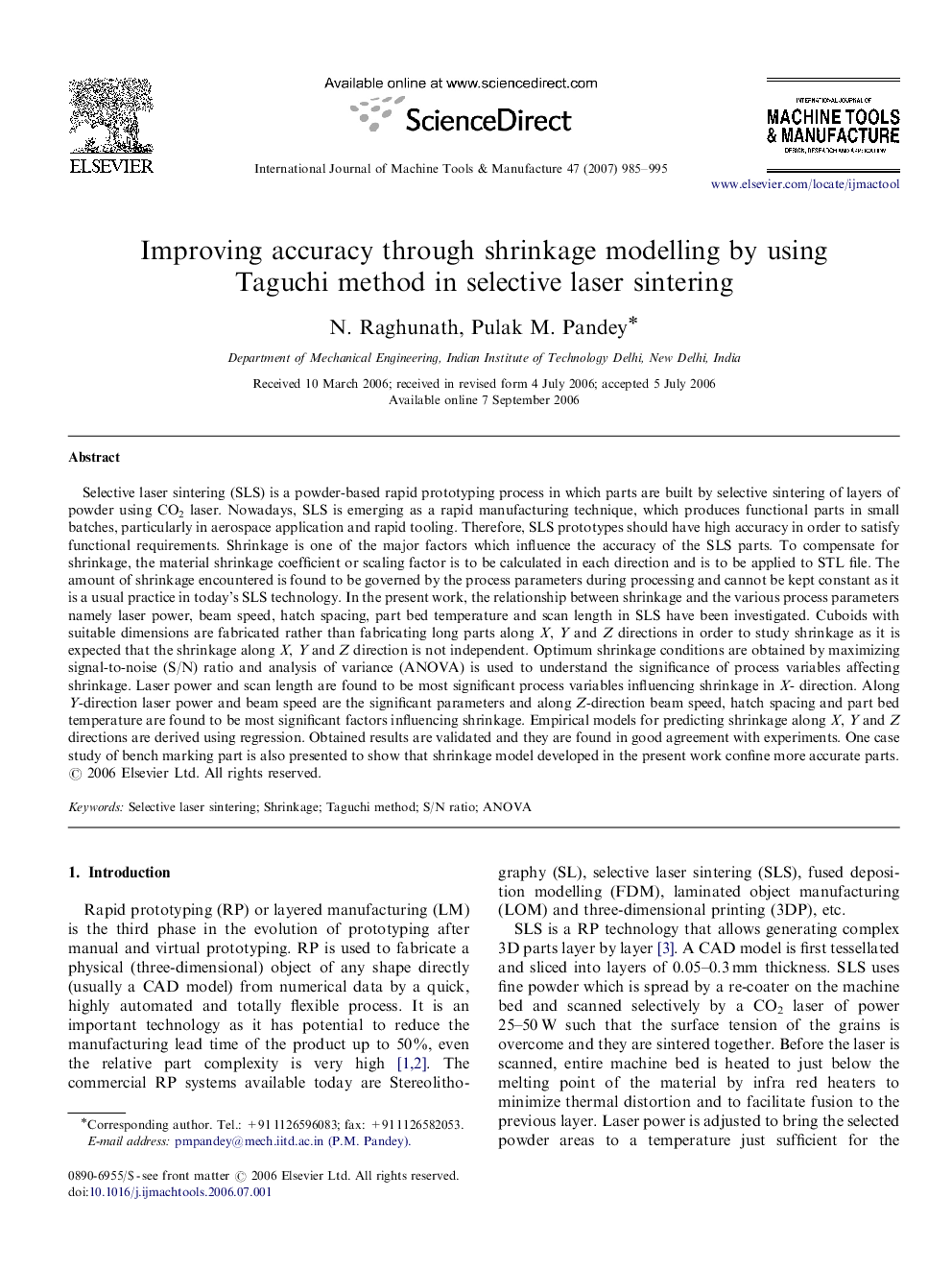| کد مقاله | کد نشریه | سال انتشار | مقاله انگلیسی | نسخه تمام متن |
|---|---|---|---|---|
| 779072 | 1464592 | 2007 | 11 صفحه PDF | دانلود رایگان |

Selective laser sintering (SLS) is a powder-based rapid prototyping process in which parts are built by selective sintering of layers of powder using CO2 laser. Nowadays, SLS is emerging as a rapid manufacturing technique, which produces functional parts in small batches, particularly in aerospace application and rapid tooling. Therefore, SLS prototypes should have high accuracy in order to satisfy functional requirements. Shrinkage is one of the major factors which influence the accuracy of the SLS parts. To compensate for shrinkage, the material shrinkage coefficient or scaling factor is to be calculated in each direction and is to be applied to STL file. The amount of shrinkage encountered is found to be governed by the process parameters during processing and cannot be kept constant as it is a usual practice in today's SLS technology. In the present work, the relationship between shrinkage and the various process parameters namely laser power, beam speed, hatch spacing, part bed temperature and scan length in SLS have been investigated. Cuboids with suitable dimensions are fabricated rather than fabricating long parts along X, Y and Z directions in order to study shrinkage as it is expected that the shrinkage along X, Y and Z direction is not independent. Optimum shrinkage conditions are obtained by maximizing signal-to-noise (S/N) ratio and analysis of variance (ANOVA) is used to understand the significance of process variables affecting shrinkage. Laser power and scan length are found to be most significant process variables influencing shrinkage in X- direction. Along Y-direction laser power and beam speed are the significant parameters and along Z-direction beam speed, hatch spacing and part bed temperature are found to be most significant factors influencing shrinkage. Empirical models for predicting shrinkage along X, Y and Z directions are derived using regression. Obtained results are validated and they are found in good agreement with experiments. One case study of bench marking part is also presented to show that shrinkage model developed in the present work confine more accurate parts.
Journal: International Journal of Machine Tools and Manufacture - Volume 47, Issue 6, May 2007, Pages 985–995